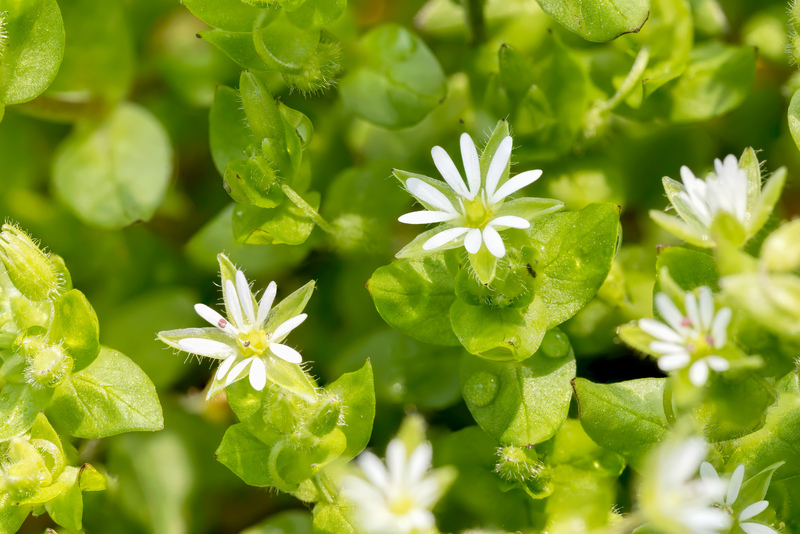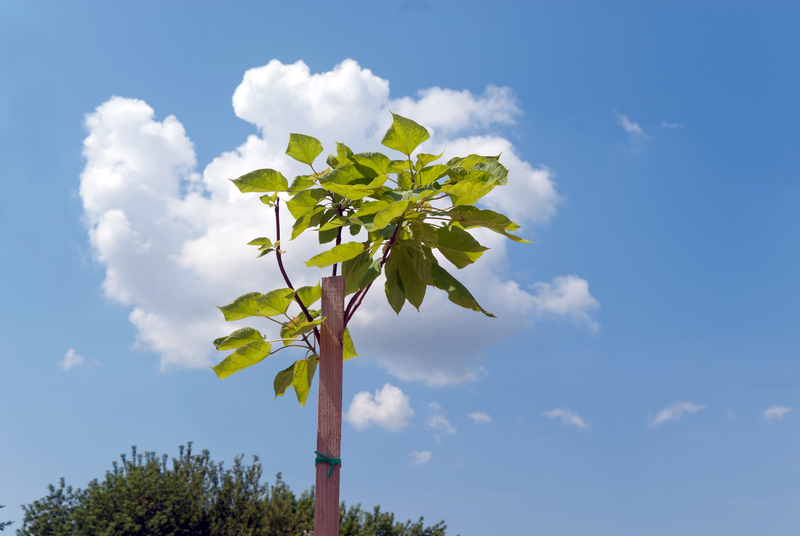Your Go-To Guide for Weed-Free Green Spaces
Posted on 13/09/2025
Your Go-To Guide for Weed-Free Green Spaces
Are you dreaming of a lush, weed-free green space where grass thrives, flowers bloom, and your landscape is always inviting? If unruly weeds are spoiling your garden paradise, you're not alone. Whether you're caring for a sprawling lawn, a compact backyard, or a cozy balcony of potted plants, this comprehensive guide will walk you through the process of creating and maintaining the weed-free garden of your dreams. Discover expert strategies, eco-friendly tips, and long-term solutions for achieving vibrant, healthy green spaces without invasive plants.

Why Keeping Green Spaces Weed-Free Matters
Weeds are more than a simple eyesore in your outdoor oasis. These persistent plants compete with your prized grass and ornamentals for sunlight, water, and nutrients. They can also harbor pests and diseases, affecting the health of your green areas. Keeping your lawns, gardens, and landscaped open spaces weed-free improves aesthetic appeal, supports environmental balance, and protects your investment.
- Boosts curb appeal and property value
- Promotes stronger, healthier lawns and gardens
- Reduces pest and disease pressure
- Encourages safe, enjoyable outdoor activities
Understanding Weeds: The Enemy of Green Spaces
Before you can effectively remove weeds from your yard, it's important to know your enemy. Weeds come in many shapes and sizes, but most share a few common traits that make them difficult to control.
What Are Weeds?
A "weed" is any plant growing where it is not wanted. This broad definition includes everything from dandelions and clover on your lawn to creeping vines in your flower beds.
Types of Common Weeds
- Annual weeds: Rapid growers that complete their lifecycle in a single season (e.g., crabgrass, chickweed).
- Perennial weeds: Tough, recurring weeds that regrow every year (e.g., dandelions, clover, bindweed).
- Woody weeds: Shrubby or vine-like invaders such as poison ivy or brambles.
How Weeds Spread in Green Spaces
Weeds spread by seeds, roots, rhizomes, or stolons. Wind, water, animals, and human activity can all contribute to weed dispersal. Understanding how they spread helps you prevent future invasions.
Essential Steps for a Weed-Free Lawn
A beautiful, weed-free green space begins on a healthy foundation. Follow these key steps to create a vibrant outdoor area you'll love year-round.
1. Prepare the Soil Properly
- Test your soil: Know its pH, nutrient levels, and texture to address deficiencies.
- Till and amend: Add compost or organic matter for healthy lawn and garden beds.
- Remove debris and old roots: Eliminate hidden weed seeds before planting.
2. Choose the Right Grass and Plants
Selecting local, climate-appropriate varieties that create dense coverage leaves less room for weeds to take hold. Talk to your local garden center about recommended species for your region.
3. Mow and Trim Correctly
- Set blades high: Taller grass shades the soil, discouraging weed seeds from sprouting.
- Sharpen mower blades: Clean cuts reduce plant stress.
- Edge garden beds: Create physical boundaries to keep weeds at bay.
4. Water Wisely
Deep, infrequent watering encourages strong root systems and resilient, weed-resistant lawns. Early morning irrigation is best to limit evaporation and minimize disease risk.
Proven Weed Control Methods for Green Spaces
Achieving weed-free green areas requires a combination of manual, cultural, and in some cases, chemical control strategies. Here's how to approach the problem safely and effectively:
Manual Weed Removal
- Hand-pulling: Best for small infestations--ensure roots are fully removed.
- Weeding tools: Use dandelion diggers or hoes to uproot tough weeds.
- Spot control: Address new invaders before they spread.
Mulching to Block Weeds
A thick layer of mulch in flower beds, under shrubs, and around trees blocks light, restricting weed growth. Organic mulches (like shredded bark or straw) also enrich the soil as they break down.
- Apply 2-4 inches deep for effective coverage.
- Keep mulch away from trunks and stems to prevent rot.
Cultural Practices for Preventing Weeds
In healthy, dense turf or planting beds, weeds have fewer opportunities to sprout. Practice regular fertilization and overseeding to maintain strong coverage.
Using Organic and Chemical Herbicides Responsibly
While your goal may be a chemical-free weed-free garden, sometimes stubborn infestations require targeted products. Choose options labeled for your needs, apply following instructions, and consider spot spraying to minimize environmental impact.
- Organic herbicides: Vinegar-based or corn gluten meal can help control young weeds.
- Selective herbicides: Target broadleaf weeds without harming grass.
- Non-selective herbicides: For driveways or paths, use with caution.
Natural and Eco-Friendly Approaches to a Weed-Free Green Space
Mulching for Your Garden Beds
Mulch is one of the most effective and sustainable solutions for organic weed control. Reapply as needed and mix mulch types for improved aesthetics and soil benefits.
Smothering with Landscaping Fabric
Landscape fabric beneath mulch or gravel paths creates an additional barrier to weeds, especially in high-traffic or ornamental areas.
Encouraging Healthy Plant Competition
- Plant densely: A thick arrangement of ground cover or flowers shades the soil.
- Choose aggressive, low-maintenance perennials or grasses for trouble spots.
Use of Natural Herbicides
Homemade sprays (baking soda, vinegar, soap) can suppress weeds in a pinch. That said, these may only be effective on annuals and must be used carefully to avoid damaging nearby ornamentals.
Common Mistakes That Encourage Weed Growth
- Watering too often - Shallow watering supports weed seedlings.
- Scalping your lawn - Excessively short mowing exposes soil, encouraging weeds.
- Neglecting bare spots - Patch open soil with grass seed or ground cover promptly.
- Allowing weeds to seed - Remove flower heads before they spread thousands of seeds.
Weed Prevention for Different Types of Green Spaces
Lawn Care
- Core aerate: Relieves compaction and thickens turf.
- Overseed in fall: Grass seed fills bare spots before weeds do.
- Apply pre-emergent herbicide: Stop weed seeds from sprouting in early spring.
Flower or Vegetable Gardens
- Rotate crops and plants: Disrupts weed cycles.
- Install edging: Contain aggressive spreaders and grass roots.
- Frequent inspection: Pull new invaders before they mature.
Patios, Walkways, and Hardscapes
- Sweep regularly: Dislodge weed seeds before they germinate.
- Re-sand pavers: Replenish gaps to discourage weeds between stones.
- Apply boiling water: Safe, instant weed kill on cracks.
Seasonal Strategies for a Weed-Free Green Space
Spring
- Apply pre-emergent herbicides as soil warms.
- Overseed bare spots as grass emerges.
- Start mulching beds as perennials sprout.
Summer
- Mow regularly to maintain optimal height.
- Spot treat any weeds quickly on sight.
- Hand pull or hoe after rain when soil is soft.
Autumn
- Remove leaf litter that can smother grass and harbor weeds.
- Aerate and overseed lawns for strong spring growth.
Winter
- Plan your spring weed control routine.
- Inspect beds and repair hardscape edges if needed.
Expert Tips for Lasting Weed-Free Green Spaces
- Stay vigilant: Frequent, small weeding sessions are less work than infrequent full-scale attacks.
- Don't compost weedy plants: Many weed seeds survive home composting and return to your yard.
- Monitor after rainfall: Weeds emerge faster in moist soil.
- Invest in quality lawn and garden tools: The right equipment makes the job easier.

FAQs about Weed-Free Green Spaces
Can I achieve weed-free lawns without chemicals?
Yes! Focus on mowing high, overseeding annually, regular fertilization, and strategic mulching for a strong, resilient green space.
How often should I check for weeds?
Weekly walk-throughs make it easy to spot and remove new weeds before they get established.
What's the most weed-resistant type of lawn grass?
Tall fescue, zoysia, and Bermuda grasses are renowned for their dense growth, which discourages weeds effectively.
Conclusion: The Path to a Year-Round Weed-Free Haven
Achieving and maintaining a weed-free green space is a commitment--but one that pays off with beauty, value, and health for your home and family. By combining smart prevention strategies, daily vigilance, sustainable practices, and occasional intervention, your garden, lawn, or patio will remain lush and inviting. Start your journey today, and transform your outdoor living experience into an oasis of vibrant, weed-free greenery!
Ready to enjoy a pristine, thriving landscape? Arm yourself with these insider tips, and take back control from weeds--once and for all!



